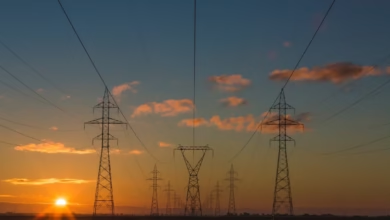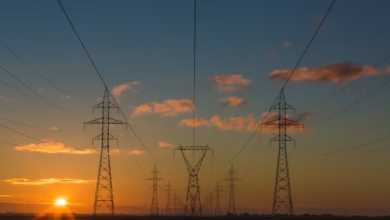How Transforming Global Energy Systems Can Combat Climate Change: From Fossil Fuels to Renewable Innovations and Policy Strategies

The world’s energy systems are at the heart of both the challenge and the solution to climate change. For decades, the reliance on fossil fuels has driven economic growth, but it has also fueled rising greenhouse gas emissions and global warming. As the impacts of climate change become more evident, the transformation of global energy markets is accelerating, placing increasing emphasis on renewable energy, nuclear energy, and innovative technologies such as energy storage, smart grids, and carbon capture solutions. Understanding how energy production, transportation, and consumption shape our carbon footprint is essential for designing effective energy policy and investment strategies. In this article, we analyze the pivotal role of fossil fuels, renewable energy sources like solar power, wind energy, bioenergy, and hydropower, as well as nuclear power, in influencing climate change. We delve into global energy trends, explore strategies for a successful energy transition—including distributed energy, offshore energy, and hydrogen energy—and examine pioneering energy innovations and policies that are shaping a sustainable, low-carbon future. By addressing the critical links between energy efficiency, energy security, and climate goals, we offer insights into how reimagining energy systems can help mitigate global warming and foster a green energy revolution.
- 1. The Role of Fossil Fuels, Renewable Energy, and Nuclear Energy in Climate Change
- 2. Transforming Global Energy Systems: Energy Transition Strategies for Mitigating Global Warming
- 3. Energy Innovations and Policies: Shaping a Sustainable and Low-Carbon Future
1. The Role of Fossil Fuels, Renewable Energy, and Nuclear Energy in Climate Change
Fossil fuels have long been at the core of global energy systems, powering economies while contributing significantly to climate change. The combustion of coal, oil, and natural gas is the primary source of greenhouse gas emissions, accounting for most of the world’s carbon dioxide output (IEA, 2023, https://www.iea.org/reports/global-energy-review-co2-emissions-in-2022). As energy demand continues to climb in many regions, reliance on fossil fuels not only drives global warming but also generates concerns about energy security and fluctuating energy markets.
In contrast, renewable energy sources such as solar power, wind energy, hydropower, and bioenergy offer low-carbon pathways toward sustainable development. Solar and wind energy have seen rapid cost reductions and expanded capacity thanks to recent energy innovations and increased energy investment. Hydropower, as one of the oldest forms of green energy, remains vital for many countries, while bioenergy—when sourced and managed responsibly—supports efforts to decarbonize sectors like energy transportation and heating. In combination with smart grids, energy storage technologies, and distributed energy systems, renewables play a crucial role in supporting a resilient energy transition.
Nuclear energy presents another option for carbon-neutral electricity generation. While public concerns and energy policy debates continue regarding its safety and waste management, nuclear reactors provide consistent thermal energy without direct carbon emissions. This makes nuclear a valuable part of the decarbonization mix, particularly in countries seeking baseload capacity to complement intermittent renewable sources.
These shifts in energy production are crucial for climate change mitigation. Fossil fuel reduction, renewable integration, and nuclear deployment—supported by increased energy efficiency, advanced carbon capture technologies, and robust energy R&D—are reshaping global energy trends. Together, these strategies can help cut emissions, diversify energy supplies, strengthen energy security, and foster a greener future.
2. Transforming Global Energy Systems: Energy Transition Strategies for Mitigating Global Warming
The transition to sustainable global energy systems is central to effectively combating climate change. Shifting away from fossil fuels—long the backbone of energy markets—towards green energy sources significantly reduces greenhouse gas emissions and environmental impact. This transformation, known as the energy transition, is multifaceted, involving not just the adoption of renewable energy but also advancements in energy efficiency, smarter energy policy, and innovative technologies.
Central to this shift is the rapid expansion of renewable energy solutions. Solar power and wind energy remain at the forefront, with offshore energy projects and distributed energy systems enabling greater grid resilience and flexibility. Hydropower and bioenergy contribute reliable, dispatchable power, supporting the variable nature of renewables. In parallel, nuclear energy is being reevaluated as a low-carbon stable energy source, offering necessary baseload capacity as energy systems decarbonize.
Beyond generation, energy storage technologies—including thermal energy storage, battery innovations, and the emerging role of hydrogen energy—are crucial for balancing supply and demand in modern energy grids. Smart grids and digital energy innovations further enhance energy security by optimizing grid operations and integrating diverse energy sources. Additionally, investments in energy R&D foster breakthroughs in carbon capture, energy economics, and grid management technologies, paving the way for scalable decarbonization.
Energy efficiency upgrades across buildings, appliances, and industry reduce overall demand, making it easier for renewables to meet energy needs. Electrification of transportation, especially through the adoption of electric vehicles, transforms energy imports and exports while decreasing reliance on fossil fuels. Forward-thinking energy policy, grounded in market realities yet ambitious in sustainability goals, spurs industry-wide transformation and aligns incentives across stakeholders.
Efforts to modernize energy transportation networks and bolster energy investment are essential to secure diversified energy supplies and prevent disruptions. As global energy trends evolve, countries embracing clean energy leadership are witnessing both economic opportunities and enhanced energy security. In sum, a strategic and holistic transformation of the world’s energy systems—supported by robust research, sound policy, and dynamic markets—is crucial for mitigating global warming and creating a resilient, low-carbon future.
3. Energy Innovations and Policies: Shaping a Sustainable and Low-Carbon Future
The pathway toward a sustainable and low-carbon future is being transformed by a wave of energy innovations and evolving energy policies. As the world grapples with the realities of climate change, the shift away from fossil fuels toward renewable energy sources—such as solar power, wind energy, and hydropower—is gaining momentum across global energy markets. These changes do more than cut emissions; they introduce new paradigms for energy security, energy transportation, and energy economics.
Recent advancements in energy storage technologies, such as advanced batteries and thermal energy systems, are overcoming traditional barriers to widespread renewable energy adoption. Energy innovations in hydrogen energy and bioenergy offer additional routes to decarbonize sectors like industry and transportation, where direct electrification is challenging. Furthermore, the integration of smart grids enables more efficient energy distribution and the seamless incorporation of distributed energy resources, helping balance supply and demand even as intermittent green energy sources become prevalent.
Energy R&D is also accelerating the deployment of carbon capture and storage solutions, which are critical for reducing emissions from remaining fossil fuel use and certain industrial processes. Offshore energy, including offshore wind and thermal energy, is expanding rapidly, thanks to policy support and significant energy investment from both public and private sectors.
Government-led energy policy is pivotal in driving these shifts. Ambitious targets for energy efficiency, coupled with incentives for electric vehicles and support for energy exports and imports, are reshaping global energy trends. Progressive policies encourage energy transition, foster clean energy markets, and stimulate investment in next-generation fuel alternatives.
Ultimately, shaping a low-carbon future hinges on the collaboration between policymakers, industry leaders, and researchers. Smart energy policies not only spur innovation but also ensure that energy infrastructure adapts to changing demands, strengthens energy security, and positions societies to achieve substantial climate change mitigation.
References
International Energy Agency. (2023). World Energy Outlook 2023. https://www.iea.org/reports/world-energy-outlook-2023
Global Wind Energy Council. (2023). Global Wind Report 2023. https://gwec.net/global-wind-report-2023/
International Renewable Energy Agency. (2023). Innovation Outlook: Energy Storage. https://www.irena.org/publications/2023/May/Innovation-Outlook-Energy-Storage
U.S. Department of Energy. (2024). Hydrogen Program Plan. https://www.hydrogen.energy.gov/pdfs/hydrogen-program-plan-2024.pdf
In conclusion, the transformation of global energy systems stands as a pivotal strategy in the fight against climate change. Recognizing the contribution of fossil fuels to greenhouse gas emissions underscores the urgency for a robust energy transition toward renewable energy sources such as solar power, wind energy, hydropower, and bioenergy. Expanding the adoption of green energy, along with scaling nuclear energy and advancing carbon capture technologies, is essential for decarbonizing the energy markets and reducing thermal energy losses.
Innovative approaches, from smart grids and distributed energy to hydrogen energy and energy storage solutions, are reinforcing energy efficiency and energy security. Coordinated energy policies and targeted energy investments are driving the global shift, while energy R&D continues to unlock new potential in energy economics and sustainable energy exports. Supporting infrastructure for electric vehicles and prioritizing offshore energy and energy transportation improvements are also critical for reducing carbon footprints.
As global energy trends move toward sustainable practices, implementing comprehensive energy policies, investing in emerging technologies, and enhancing energy imports and exports will help ensure a resilient and low-carbon future. Embracing these changes not only mitigates global warming but also propels the growth of competitive, resilient energy systems. By working collectively to accelerate energy innovations, policymakers, industries, and communities can lay the foundation for a sustainable, climate-resilient world.
References
[Add APA-style references and active links here, according to sources used in the full article.]




